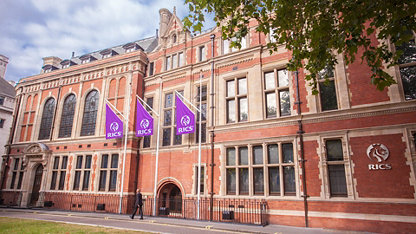One of the worrying trends in the debate about urban environments is that it prioritises the future of “global cities” – the idea that there’s no longer any difference between, say, London, Paris, Hong Kong and Bangkok.
But the reality is that the Global South is still a very different place, and what this does is obscure where the real growth is happening – which is not in so-called global cities, but in the secondary cities and towns. Many of these lack critical governance or infrastructure and face questions around whether they are economically viable, or just dormitories where people stop before they move on to bigger cities.
As we look further into the future, the scale and number of these cities is going to force their national governments to decentralise – to let go of their power and their budget. We’re going to see area-based political control within cities. We’re going to see an increasing emphasis on local community-based power – and this is where I believe the role of women in these cities will be transformative.
“We’re going to see area-based political control within cities. We’re going to see an increasing emphasis on local community-based power – and this is where I believe the role of women in these cities will be transformative. ”
Let’s take a step back. If you can imagine it, there was a time when women couldn’t even go into cities. In colonial cities in Africa, for example, women were literally barred from physically entering them, unless they had jobs as prostitutes servicing local men. This was not that long ago. Then, for an extensive period, women have been invisible: present in their reproductive role, but not as playing an economic role in the city. They have been seen as a “vulnerable group” needing social welfare. Things have changed a lot – but, even today, a lot of policy in the Global South is still based on this view.
Take gender-based violence and what are called the “safe city debates”. Since the 1980s we’ve seen positive initiatives in places such as the peripheral settlements of Cape Town, where they’ve looked at safe space for women as a practical planning issue; and in Kenya, where in one conflict study I worked on, we physically mapped the hot-spots of violence in the slums of Nairobi to persuade local tribal leaders to address the problem.

For the Global South, 150 years from now, as cities have grown into enormous, subdivided areas, the role of women is going to be crucial
But confronting the abuse of women in public space or on transport often results in providing separate spaces for them. It is a practical solution but it doesn’t address the fundamental, complex issues of male power and gender relations.
What we’ve seen in the past two decades has been a gradual shift into “mainstreaming”. We’ve started to move away from the welfarist idea of women to their economic empowerment, but focusing on the empowering of individual women who then become players in the city. I think the future holds something much more fundamental for women – moving beyond individual women to the transformation of gender-power relations. This is collective action. It is a political act, because it means transforming access to and control of capital assets.
“About 20 years ago, the women’s movement in Brazil decided to prioritise getting women into local government positions. It was a strategic decision; it may well have influenced the selection of Brazil’s first female president. ”
A good example is land and housing titles. You can give individual women access to a title to land – or you can get planners to change the power structure of how planning regulations work, so that women and men have equal access to land titles. These negotiations can take years.
Another example is equal access to education. We could say that there has already been a lot of progress in education for women in the Global South, but take a closer look at the way schools are structured, the way school books are written and the different way in which services, such as toilets, are provided for girls and boys. They are not transformative. There is still a long way to go.
Where I think we will see the biggest shift is in who holds the political and social capital. This is the glue that binds communities together. In the Global South, it is often the women who take on the role of community manager – but, to a large extent, it remains the men, the politicos in Latin America, say, who control how communities are run. Now this is changing and it will go a lot further over the next 150 years as cities grow and become fractionalised into smaller areas.
There’s going to be a convergence of local government and community power, and this is why it’s so important that we have grassroots women’s groups – not necessarily feminist groups – on the ground. Brazil is one example. About 20 years ago, the women’s movement in Brazil decided to prioritise getting women into local government positions. It was a strategic decision; it may well have influenced the selection of Brazil’s first female president.
In the West, we are seeing the start of another transformation of gender-power relations, with policy efforts to close the pay gap, and the scandal around film producer Harvey Weinstein. It has a long lineage, which can be traced back to, among other things, the planning and control of capital assets in the city. For the Global South, 150 years from now, as cities have grown into enormous, subdivided areas, the role of women is going to be crucial in ensuring that the concept of social and political capital, the cohesion and trust that is the basis of daily life in the city, hasn’t been eroded but rather, consolidated.













